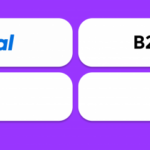About Loopring Coin
Loopring Coin Protocol 3, they want to improve the throughput of the protocol significantly. They do this by using zkSNARKs — as much work as possible is done off-chain, and they only verify the work on-chain. For the highest throughput, this only support off-chain balances. These are balances that are stored in Merkle trees. Users can deposit and withdraw tokens to your smart contracts, and their balance will be updated in the Merkle trees.
This way, they can transfer tokens between users just by updating the Merkle tree off-chain, there is no need for expensive token transfers on-chain. Note that there is never any risk of losing funds when depositing to the smart contract. Both options are trust-less and secure. On-chain data availability for the Merkle tree ensures anyone can recreate the Merkle tree just using the data published on-chain.
Loopring Coin Point Table
| Coin Basic | Information |
|---|---|
| Coin Name | Loopring Coin |
| Short Name | LRC |
| Circulating Supply | 1.33B LRC |
| Max Supply | 1,374,513,896 |
| Source Code | Click Here To View Source Code |
| Explorers | Click Here To View Explorers |
| Twitter Page | Click Here To Visit Twitter Group |
| Whitepaper | Click Here To View |
| Support | 24/7 |
| Official Project Website | Click Here To Visit Project Website |
Apparent Immediate Finality
Off-chain balances are guaranteed to be available for a short time in the future (until a withdrawal), which allows for a CEX like experience. A DEX can settle a ring off-chain and immediately show the final results to the user without waiting for the on-chain settlement confirmation. Using on-chain balances, users can modify their balances/allowances directly by interfacing with the blockchain. Therefore finality is only achieved when the ring settlement is confirmed on-chain.
Higher Throughput & Lower Cost
An off-chain token transfer takes only a minimal cost for generating the proof for updating a Merkle tree. However, the cost of a single on-chain token transfer takes roughly 20,000 gas, and checking the balance/allowance of the sender takes roughly another 5,000 gas. These costs significantly limit the possible throughput and increase the cost of rings settlement.
Operators
The operator is responsible for creating, proving, and submitting blocks. Blocks will be submitted on-chain, and the correctness of the work in a block needs to be proven with a ZKP proof. The operator can be a simple Ethereum address or a complex contract that allows multiple operators to work together to submit and prove blocks. It is up to the exchange for how this is set up.
The operator contract can also be used to enforce an off-chain data-availability system. A simple scheme could be that multiple parties need to sign off on a block before it can be committed. This can be checked in the operator contract. As long as one member is trustworthy and actually shares the data, then data-availability is ensured.
Exchanges
Block submission needs to be done sequentially so the Merkle tree can be updated from a known old state to a new state. To allow concurrent settling of orders by different independent parties, they allow the creation of stand-alone exchange contracts. Every exchange operates entirely independently. Note that user accounts and orders cannot be shared over different exchanges. Exchanges can decide to use the same Exchange contract to share orders and users’ accounts if they desire.
The Loopring contract is the creator of all exchanges built on top of the Loopring protocol. This contract contains data and functionality shared over all exchanges and enforces some minimal exchange settings, such as the forced withdrawal fee.
Why Choose Loopring Coin?
It is also possible to use the token addresses as seen by the exchange as a key value. Because the deposit contract handles all interaction with the token contract, the token address value seen by the exchange may differ from the actual token address. The deposit contract can simply map to the actual token address just before interacting with the token contract.
This allows, for example, the same token to be registered multiple times, but the deposit contract can store the funds in different ways. Alternatively, it can even be used to support trading multiple tranches of a single security token.
Where Can You Buy Loopring Coin?
Tokens Can Be Purchased On Most Exchanges. One Choice To Trade Is On Binance As It Has The Highest LRC/USDT. e Trading Volume, $8,947 As Of February 2021. Next is OKEx, With A Trading Volume Of $6,180,82. Other option To Trade Include LRC/USDT And Huobi Global. Of Course, It Is Important To Note That Investing In Cryptocurrency Comes With A Risk, Just Like Any Other Investment Opportunity.
Market Screenshot

Loopring Coin Supported Wallet
Several Browser And Mobile App Based Wallets Support Loopring Coin. Here Is Example Of Wallet Which Loopring Coin – Trust Wallet For Hardware Ledger Nano.
FAQ Of Loopring Coin
Where I Can Find Loopring Coin Whitepaper?
You Can Find Loopring Coin Whitepaper By Clicking Here.
Where I Can Buy/Sell Balancer Token?
You Can Buy or Sell Balancer Token On Some Popular Exchange For Example – Binance.
What is Circulating Supply Of Balancer Token?
Circulating Supply Of Balancer Token Is 1.33B LRC.








